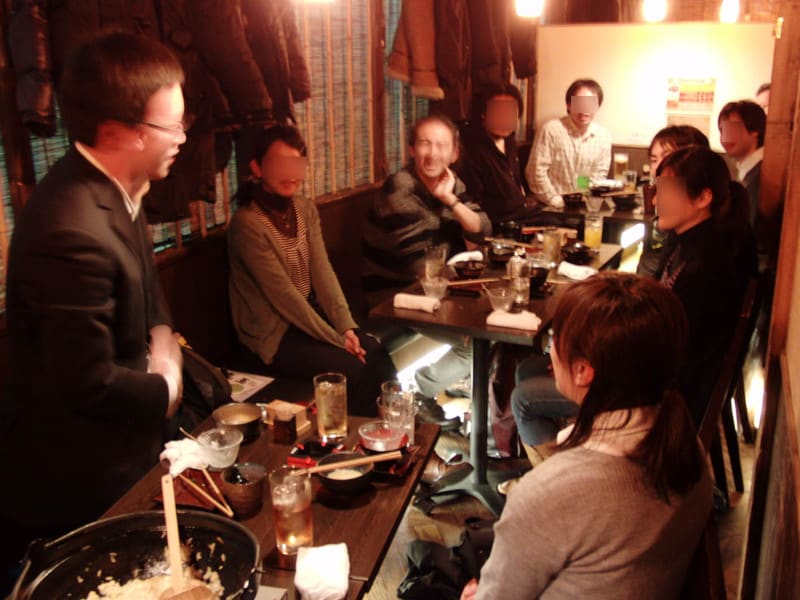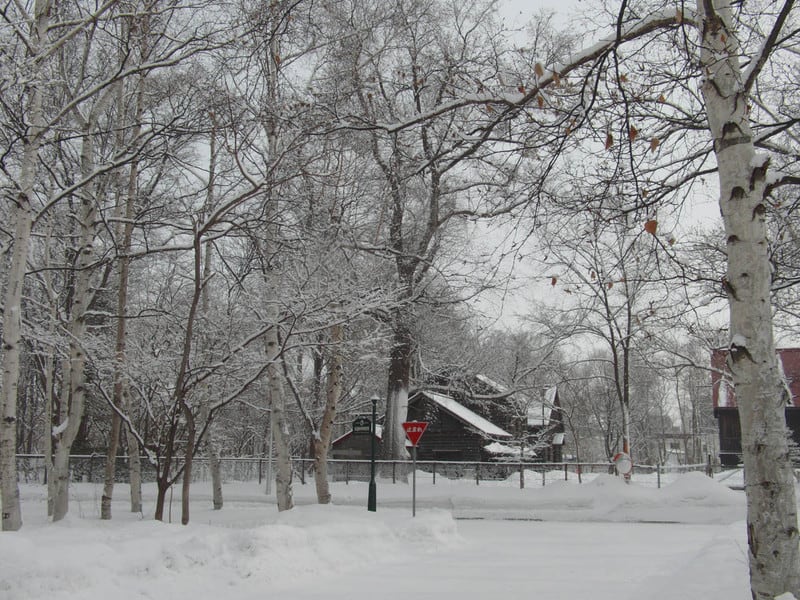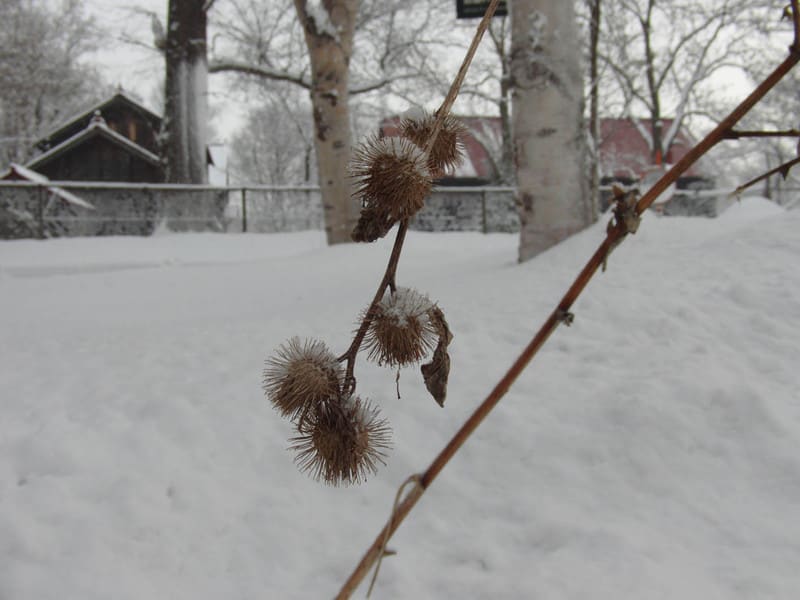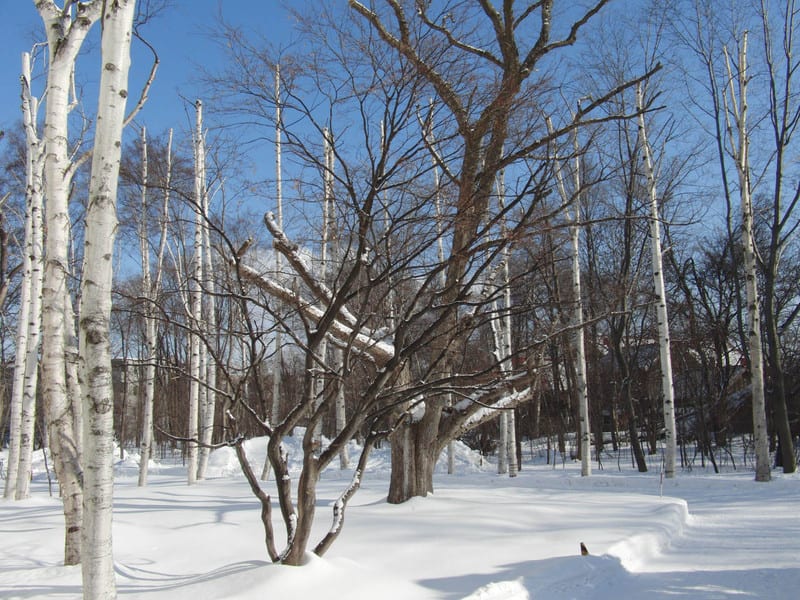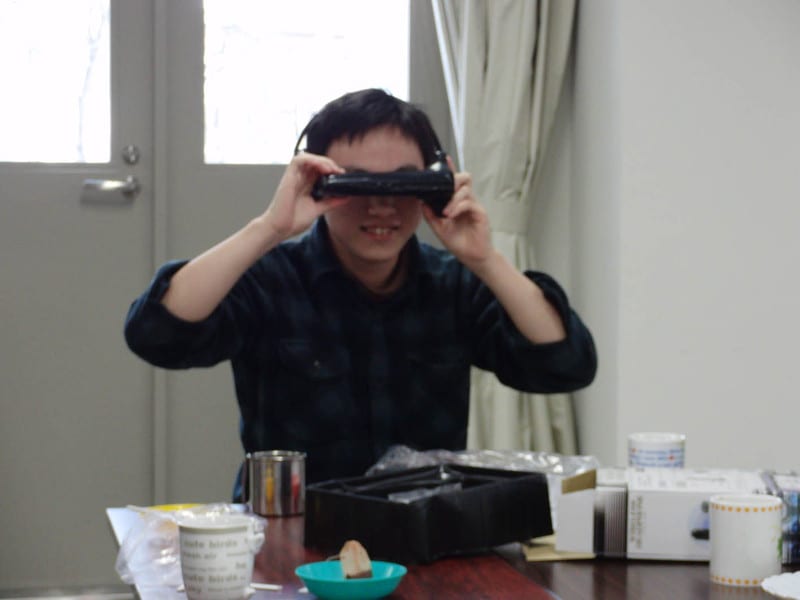桜プリン。桜の葉で煮出した抽出液にミルクとゼラチンを入れて固めたプリン。
塩漬けの桜にほのかな期待を込めながら、艶やかな白いプリンにスプーンをあてる。数センチメートルほど、表面を滑走させながら、やさしく深みに入れる。
すくいあげたプリンを口の中へ誘うと、ほのかに桜のかほり漂いながら、ミルクの柔らかな味が口に広がる。恐る恐る、一片を噛むと、その程よい弾力が心弾ませる。
春の心に誘われながら、スプーンでプリンを掘り下げる。<o:p></o:p>
おお、プリンの下から粒小豆たちが顔を出す。その餡と桜プリンのハーモーニーが瞬く間に桜満開の春へと誘う。
そして、塩漬けの桜が、まだ凍てつく北国の夜空を次第に解かしてゆく。<o:p></o:p>
おうちごはんのお店「卯和」で頂ける、桜プリン。心が打ちのめされた時に、訪れたい食堂だ。
小島久弥さんが、淡水湖沼の嫌気的な湖水から新属の脱窒硫黄酸化細菌を発見。至適温度が22℃で、元素状硫黄やチオ硫酸塩の酸化能を有する。硫黄酸化の際に、電子受容体として硝酸塩を利用し、窒素にまで変換する。つまり、湖沼生態系からの窒素除去に寄与していると考えられる。<o:p></o:p>
<o:p> </o:p>
その新規微生物名は、Sulfuricella denitrificans 。詳細は、”International Journal of Systematic and Evolutionary Microbiology”で(オンラインで公開)。<o:p></o:p>
<o:p> </o:p>
Hisaya Kojima and Manabu Fukui.
Sulfuricella
denitrificans gen. nov., sp. nov., a novel
sulfur-oxidizing autotroph isolated from a freshwater lake. International
Journal of Systematic and Evolutionary Microbiology.
<link href="file://localhost/Users/MFukui/Library/Caches/TemporaryItems/msoclip/0/clip_filelist.xml" rel="File-List" /> <style> &amp;amp;amp;amp;lt;!-- /* Font Definitions */ @font-face {font-family:&amp;amp;amp;amp;quot;MS 明朝&amp;amp;amp;amp;quot;; panose-1:2 2 6 9 4 2 5 8 3 4; mso-font-charset:78; mso-generic-font-family:auto; mso-font-pitch:variable; mso-font-signature:1 0 16778247 0 131072 0;} @font-face {font-family:Century; panose-1:2 4 6 4 5 5 5 2 3 4; mso-font-charset:0; mso-generic-font-family:auto; mso-font-pitch:variable; mso-font-signature:3 0 0 0 1 0;} @font-face {font-family:&amp;amp;amp;amp;quot;\@MS 明朝&amp;amp;amp;amp;quot;; panose-1:2 2 6 9 4 2 5 8 3 4; mso-font-charset:78; mso-generic-font-family:auto; mso-font-pitch:variable; mso-font-signature:1 0 16778247 0 131072 0;} @font-face {font-family:&amp;amp;amp;amp;quot;ヒラギノ角ゴ Pro W3&amp;amp;amp;amp;quot;; panose-1:2 11 3 0 0 0 0 0 0 0; mso-font-alt:&amp;amp;amp;amp;quot;ヒラギノ角ゴ Pro W3&amp;amp;amp;amp;quot;; mso-font-charset:78; mso-generic-font-family:auto; mso-font-pitch:variable; mso-font-signature:1 0 16778247 0 131072 0;} @font-face {font-family:&amp;amp;amp;amp;quot;\@ヒラギノ角ゴ Pro W3&amp;amp;amp;amp;quot;; panose-1:2 11 3 0 0 0 0 0 0 0; mso-font-charset:78; mso-generic-font-family:auto; mso-font-pitch:variable; mso-font-signature:1 0 16778247 0 131072 0;} /* Style Definitions */ p.MsoNormal, li.MsoNormal, div.MsoNormal {mso-style-parent:&amp;amp;amp;amp;quot;&amp;amp;amp;amp;quot;; margin:0mm; margin-bottom:.0001pt; text-align:justify; text-justify:inter-ideograph; mso-pagination:none; font-size:12.0pt; font-family:&amp;amp;amp;amp;quot;Times New Roman&amp;amp;amp;amp;quot;; mso-ascii-font-family:Century; mso-ascii-theme-font:minor-latin; mso-fareast-font-family:&amp;amp;amp;amp;quot;MS 明朝&amp;amp;amp;amp;quot;; mso-fareast-theme-font:minor-fareast; mso-hansi-font-family:Century; mso-hansi-theme-font:minor-latin; mso-bidi-font-family:&amp;amp;amp;amp;quot;Times New Roman&amp;amp;amp;amp;quot;; mso-bidi-theme-font:minor-bidi; mso-font-kerning:1.0pt;} /* Page Definitions */ @page {mso-page-border-surround-header:no; mso-page-border-surround-footer:no;} @page Section1 {size:612.0pt 792.0pt; margin:99.25pt 30.0mm 30.0mm 30.0mm; mso-header-margin:36.0pt; mso-footer-margin:36.0pt; mso-paper-source:0;} div.Section1 {page:Section1;} --&amp;amp;amp;amp;gt; </style> Abstract. A novel facultatively anaerobic sulfur-oxidizing bacterium, strain skB26T was isolated from anoxic water of a freshwater lake in Japan. The cells were rod-shaped, motile, and Gram-negative. As sole energy source, the isolate oxidized elemental sulfur and thiosulfate to sulfate. The strain skB26T was microaerobic, and also could utilize nitrate as electron acceptor, reducing it to nitrogen. Growth was observed at temperature lower than 28°C, and the optimum growth was observed at 22°C. The range of pH for growth was 6.0-9.0, and the optimum pH was 7.5-8.0. The optimum growth of the isolate was observed in the medium without NaCl, and no growth was observed in the medium containing NaCl more than 220 mM. The G+C content of genomic DNA was around 59 mol%. Phylogenetic analysis based on 16S rRNA gene indicated that the strain was member of the class Betaproteobacteria, and the closest cultivated relative was 'Thiobacillus plumbophilus', with the sequence similarity of 93%. Phylogenetic analyses were also performed on genes involved in sulfur oxidation, inorganic carbon fixation, and nitrate respiration. On the basis of its phylogenetic and phenotypic properties, the strain skB26T (=NBRC 105220T =DSM 22764T) is proposed as type strain of a new species of a novel genus, Sulfuricella denitrificans gen. nov., sp. nov.
<o:p></o:p>
加茂野晃子さんを中心にして、オックスフォード大学動物学教室のCAVALIER-SMITHさんとFIORE-DONNOさんとともに行った共同研究の成果の一部がオンラインで公開されました(英国王立協会2国間国際共同研究事業)。<o:p></o:p>
<o:p> </o:p>
ANNA MARIA FIORE-DONNO, AKIKO KAMONO, EMA E. CHAO, MANABU FUKUI and THOMAS CAVALIER-SMITH.<o:p></o:p> Invalidation of Hyperamoeba by Transferring its Species to Other Genera of Myxogastria.<o:p></o:p> Journal of Eukaryotic Microbiology<o:p></o:p>
<o:p> </o:p>
ABSTRACT. The genus Hyperamoeba Alexeieff, 1923 was established to accommodate an aerobic amoeba exhibiting three life stages?amoeba, flagellate, and cyst. As more species/strains were isolated, it became increasingly evident from small subunit (SSU) gene phylogenies and ultrastructure that Hyperamoeba is polyphyletic and its species occupy different positions within the class Myxogastria. To pinpoint Hyperamoeba strains within other myxogastrid genera we aligned numerous myxogastrid sequences: whole small subunit ribosomal (SSU or 18S rRNA) gene for 50 dark-spored (i.e. Stemonitida and Physarida) Myxogastria (including a new "Hyperamoeba"/Didymium sequence) and a ?400-bp SSU fragment for 147 isolates assigned to 10 genera of the order Physarida. Phylogenetic analyses show unambiguously that the type species Hyperamoeba flagellata is a Physarum (Physarum flagellatum comb. nov.) as it nests among other Physarum species as robust sister to Physarum didermoides. Our trees also allow the following allocations: five Hyperamoeba strains to the genus Stemonitis; Hyperamoeba dachnaya, Pseudodidymium cryptomastigophorum, and three other Hyperamoeba strains to the genus Didymium; and two further Hyperamoeba strains to the family Physaridae. We therefore abandon the polyphyletic and redundant genus Hyperamoeba. We discuss the implications for the ecology and evolution of Myxogastria, whose amoeboflagellates are more widespread than previous inventories supposed, being now found in freshwater and even marine environments.
<o:p></o:p>
















